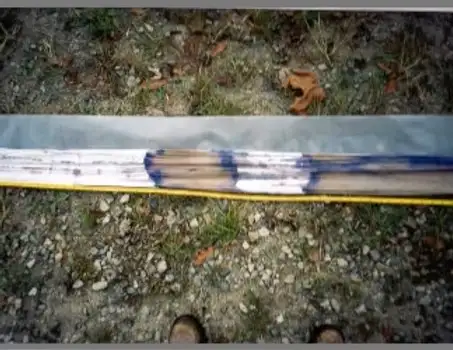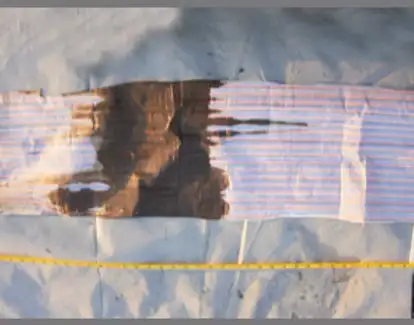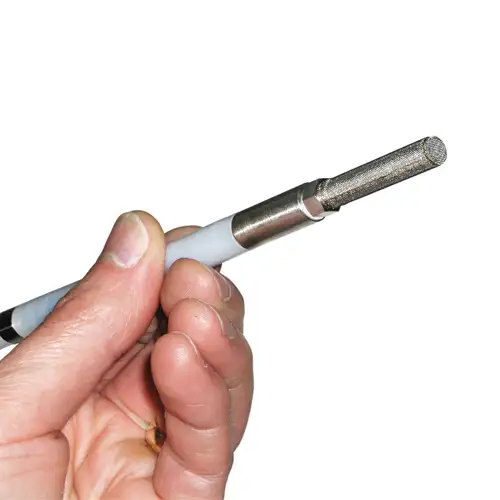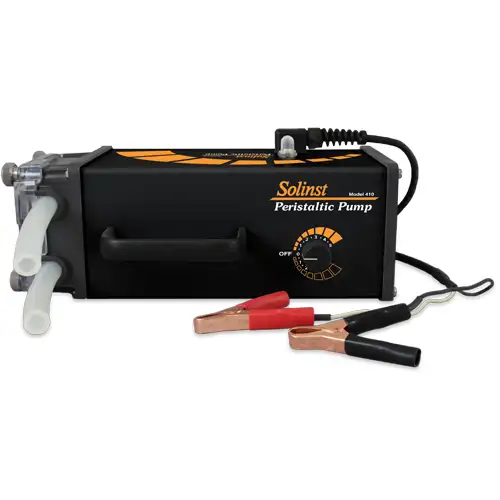
Model 405 NAPL Flute
Water Quality Probes
Solinst Eureka, a global leader in the design and manufacture of multiparameter water quality sondes.
Solinst Field Services
Safeguard your project’s success and mitigate any potential for downtime or additional costs.

NAPL Flute
The NAPL Flute system is a reactive cover for the blank Flute liner which addresses the problem of locating NAPL free product in the formation.
NAPL Flute’s Can Be Installed in the Overburden and Bedrock Via the Following Methods
Eversion in Bedrock Wells
The NAPL Flute is everted into the borehole on the outside of a Blank Flute Liner. For a detailed PDF on the NAPL Flute installation description, click here.
Direct Push Installation (As seen in video):
The NAPL Flute is compression-wrapped and installed within Geoprobe rods once the terminal depth is reached. The NAPL Flute has a tube for water addition, and as water is added to the interior of the liner, the rods are removed in a stepwise fashion. A tether at the surface allows you to pull the liner out of the hole once the reaction time has finished. For a detailed PDF on the installation sequence, click here.


How Does the NAPL Flute Work?
As the liner everts down the borehole, the NAPL Flute is hydrophobic. It quickly wicks any NAPL contacted in the fractures or pore space into the cover. When the free product contacts the interior of the NAPL Flute, it quickly creates a stain on the cover and dissolved the multi-colored dye stripes. After a short period of time, the NAPL Flute and blank liner are removed from the well and the depth of the free product is located by measuring the stain depth with a tape measure.
The inverted cover can be placed next to a tape measure to allow the stains to be photographed with the indicated depth in the borehole. The cover can be rolled for storage, but the stains may fade with long exposure. The dye stains are more durable. The oil-on-paper-like stains will disappear. Some of the common stains are shown in the photos on this page.
NAPL Flute Reactions with Different Contaminants
Different contaminants react differently with the dye stripes located on the outside of the NAPL Flute. For a list of tested compounds, click here. Contact with NAPLs such as TCE and PCE dissolves the dye stripes and carries the dye to the interior surface of the cover. The cover material is white and the displacement of the dye to the interior surface. That stain is the indication that the cover has come in contact with a NAPL. The size and location of the stain are indicative of the amount of NAPL present and the nature of the source.
Some NAPL materials such as coal tar and creosote are naturally dark colored. When those materials are wicked into the covering, the dark stain appears on both the inside and outside surface of the cover. Other NAPLs such as gasoline and similarly less aggressive solvents will also displace the dye stripes to the inside of the thin cover. Other NAPLs such as coal oil do not displace the dye stripes. However, when absorbed by the cover material, those NAPLs produce a translucent appearance of the cover much like an oil stain on paper. The cover does not absorb water.
The cover only reacts to the pure product of the NAPL and does not provide a significant stain if exposed to the dissolved phase. However, the dissolved phase of chlorinated solvents, for long periods, will cause the dye stripes to bleed or produce a light pink cast due to the red stripes. Those stains are not as obvious as the contact with the NAPL.
Mapping the Dissolved Phase
Solinst Flute has a technique called FACT (Flute Activated Carbon Technique) which does respond to the dissolved phase of many contaminants. A common practice is to combine the FACT with the NAPL Flute cover to map both the NAPL and the distribution of the dissolved phase.
Related Products
Enhanced Bioremediation
The Waterloo Emitter™is a simple, low cost device designed for the bioremediation of contaminated groundwater. It enables oxygen or other amendments to diffuse through silicone or LDPE tubing in a controlled, uniform manner. Ideal for aerobic bioremediation of MTBE and BTEX, with minimal maintenance required.
3/8" Diameter Flexible Pneumatic Pump
The Micro Double Valve Pump has a remarkably small and flexible design. At 3/8" (10 mm) diameter it is small enough to sample groundwater from channels of a CMT System.
Rugged Peristaltic Pump
Compact, lightweight, and water-resistant, the Solinst Peristaltic Pump is designed for field use. One easy-access control allows various speeds and reversible flow. Ideal for shallow water and vapor sampling.
Tag Line - Rugged, Simple, Convenient
The Tag Line uses a weight attached to laser marked cable, mounted on a sturdy reel. Convenient for measuring depths during monitoring well construction.




